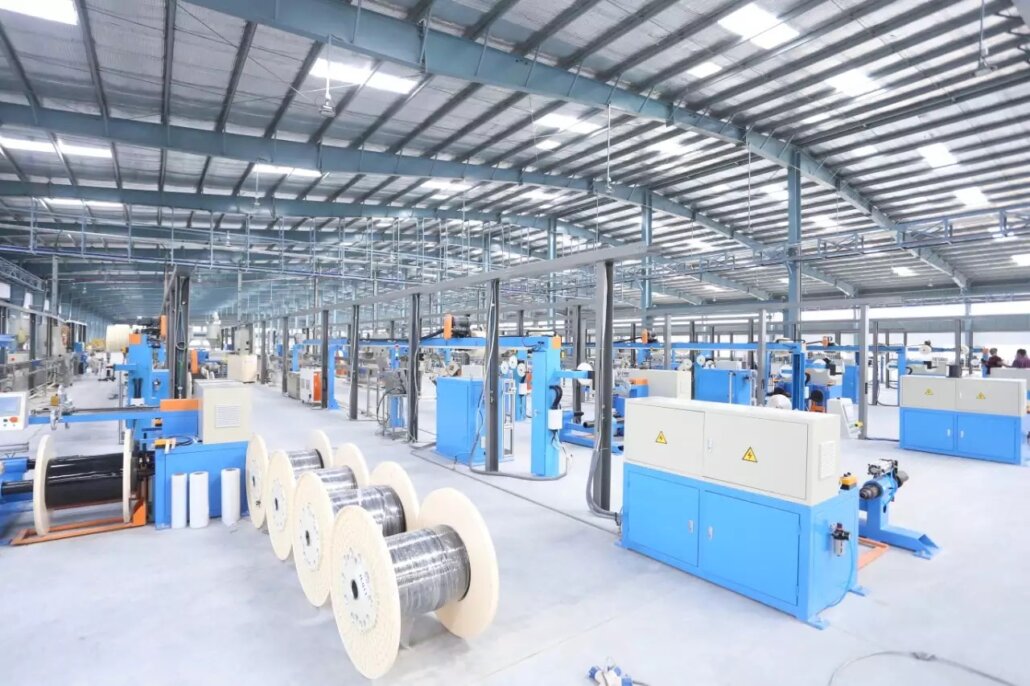Optical fibers have revolutionized the way we communicate, enabling high-speed data transmission over vast distances. But have you ever wondered how these tiny glass filaments are made? In this article, we’ll explore the complex process of optical fiber manufacturing, which involves two main steps: preform making and fiber drawing. From the MCVD process to the fiber drawing tower, we’ll take a deep dive into the world of optical fiber production.
1. Optical Fiber Manufacturing
Optical fiber manufacturing can be divided into two main processes: preform making and fiber drawing. These processes are crucial to ensuring the quality, mechanical strength, transmission characteristics, and service life of the final product.
2. Optical Fiber Preform Making
The production of optical fiber preforms involves several processes, including MCVD, OVD, and VAD. In this article, we’ll focus on the MCVD process, which is the most common manufacturing technique used today.
2.1 Modified Chemical Vapor Deposition (MCVD)
The MCVD process involves introducing a gaseous mixture composed of silicon chloride, germanium chloride, and other chemical substances into a quartz glass tube. The tube is then heated and rotated to oxidize the silicon and germanium, forming silica and germanium dioxide. These materials reside in the tube to form the main part of the optical fiber. The concentration of the gaseous mixture determines the refractive index, expansion coefficient, and melting point of the optical fiber. After the optical fiber preform has cooled, it undergoes a quality test to measure its refractive index.
3. Optical Fiber Drawing
Optical fiber drawing involves melting the preform and drawing it into small optical fibers with a diameter that meets the requirements. The core/clad diameter ratio and refractive index distribution of the optical fiber are kept unchanged.
3.1 Fiber Drawing Tower
The optical fiber preform is placed into a fiber drawing tower, which can be more than 10 meters high. It is heated by a graphite furnace that generates a high temperature of 1700-2200°C, softened, and then wound by a drawing wheel to form a slender optical fiber. The drawing tower has an information feedback system that accurately controls the fiber diameter through the laser micrometer.

3.2 Coating
The 125μm fiber that is drawn from the preform is susceptible to micro-cracks on its surface. If left exposed to the atmosphere, the OH- in the atmosphere will cause these micro-cracks to expand, ultimately leading to the fiber breaking. To prevent this, a thin layer of resin is applied to the optical fiber during the drawing process, and it is quickly dried to avoid any mutual adhesion. This coating also helps to enhance the strength of the optical fiber.
4. Following Tests
Once the drawing process is complete, the optical fiber goes through a series of tests to ensure its quality. These tests include measuring its tensile strength, refractive index, fiber structure, attenuation, information carrying capacity (bandwidth), dispersion, and operating temperature and humidity range, among others. These tests are crucial in determining whether the optical fiber meets the required standards and specifications for its intended use.
In conclusion, optical fiber manufacturing is a complex process that involves multiple steps and requires careful attention to detail to produce high-quality optical fibers. The two main steps of optical fiber manufacturing are the preform-making process and fiber drawing. The preform-making process involves techniques such as MCVD, which is used to deposit the necessary materials inside a quartz glass tube to create the preform. The preform is then drawn into a fiber of a specific diameter, with its core/clad diameter ratio and refractive index distribution remaining constant.
It is important to note that the optical fiber manufacturing process is not a one-size-fits-all solution. The manufacturing process may vary depending on the intended use and specifications of the optical fiber. However, understanding the basics of the manufacturing process can provide a solid foundation for further exploration and understanding of this fascinating technology. Optical fibers have revolutionized communication and have opened up possibilities for countless applications, from telecommunications to medicine and beyond.




